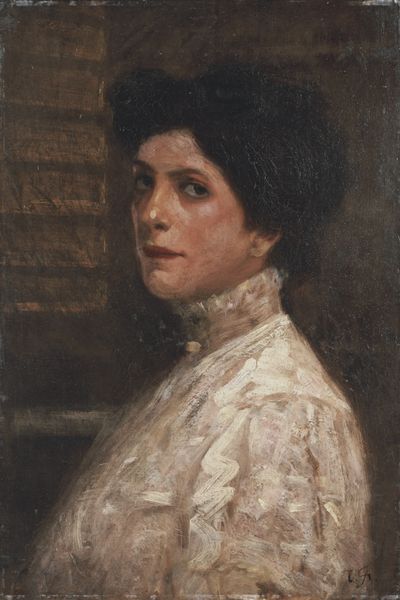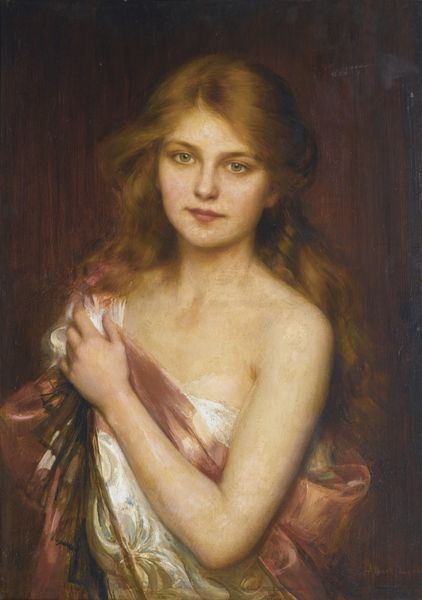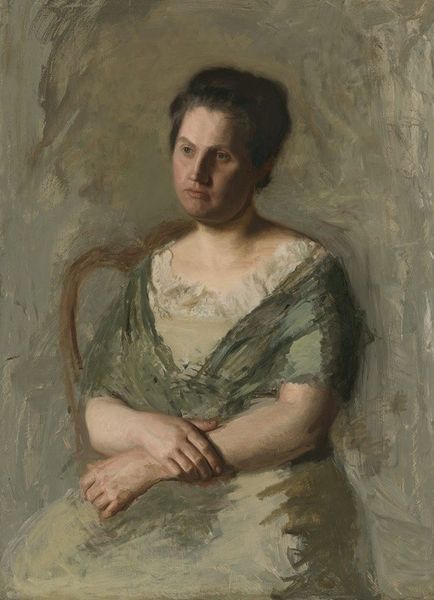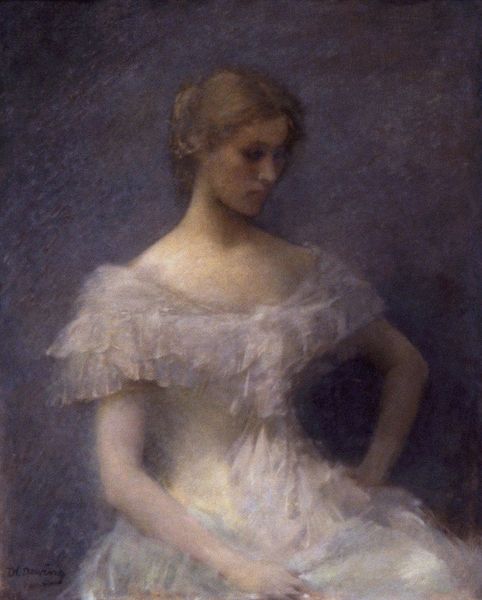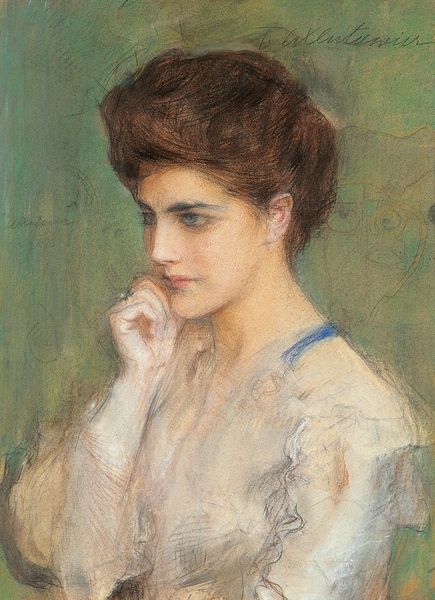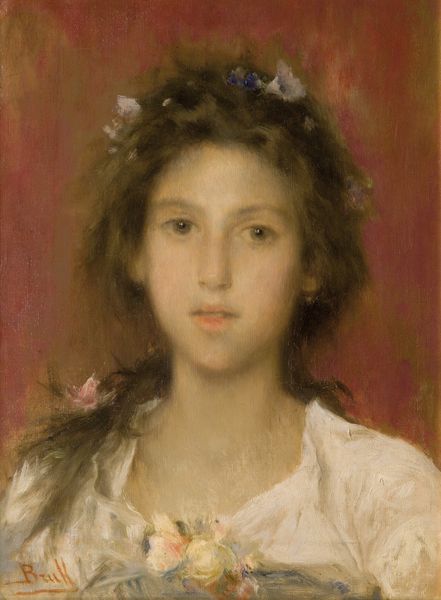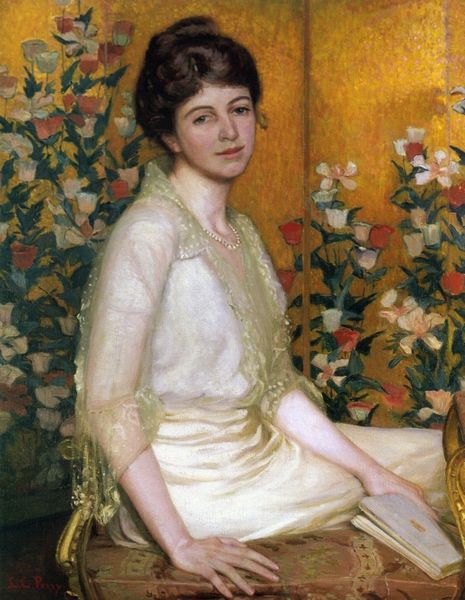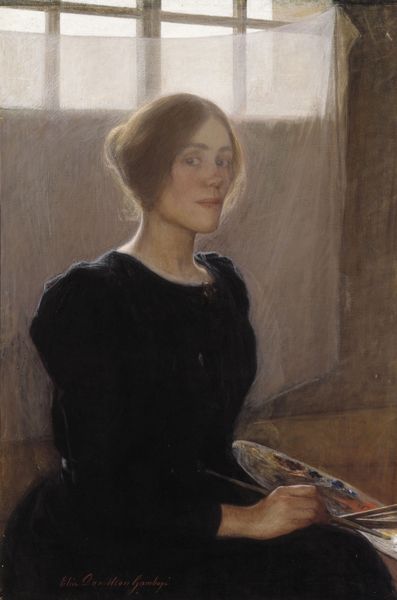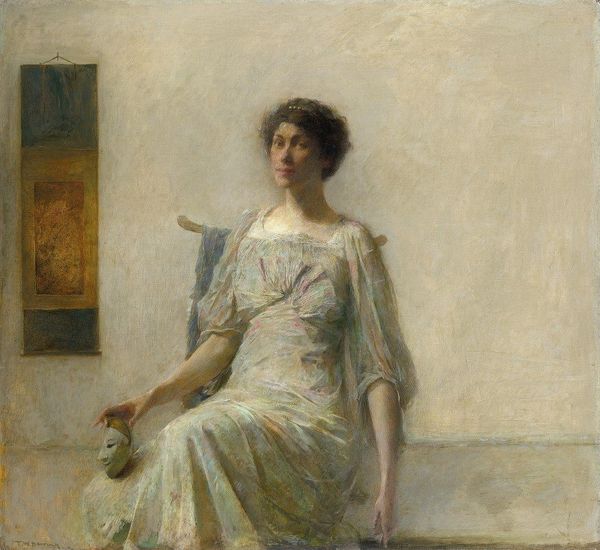
Copyright: Public domain
Editor: So, this is John William Waterhouse’s "Portrait of Miss Claire Kenworthy," painted in 1900 with oil on canvas. The subdued colours create a sense of quiet introspection, and I find the sitter’s gaze somewhat melancholic. What do you see in this piece? Curator: Well, considering Waterhouse's known fascination with mythological and literary women, this portrait presents an intriguing departure, yet one still deeply embedded in the art world of its time. Look at how Miss Kenworthy is presented – what does her clothing and pose communicate? Editor: I see that she wears a simple white dress with a scarlet ribbon, which stands in contrast to many other formal portraits of the time. Her hands are clasped and it is pretty informal… maybe meant to be viewed as “natural”? Curator: Precisely! This reflects a shift happening at the turn of the century. High society women were not solely defined by the rigid dictates of the salon, they could embrace a newfound informality. This painting serves not only as a representation of the sitter but as a projection of cultural values evolving. The redness of the sash, it adds visual interest and directs us, is she announcing herself to the establishment by being her own woman? Editor: So, even something seemingly simple as the subject’s pose, attire and the artist’s composition would reflect broader societal changes. How fascinating! Curator: Absolutely! And thinking further, a portrait like this also functioned within a market. Who was commissioning these types of works and why? Exploring these aspects opens new doors into understanding art's place within a specific historical and economic context. Editor: That makes me consider that Waterhouse's other paintings with literary heroines made them so famous, perhaps also served to construct an idea of women! I’ll keep that in mind from now on!
Comments
No comments
Be the first to comment and join the conversation on the ultimate creative platform.
